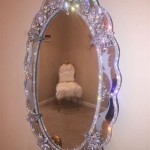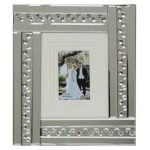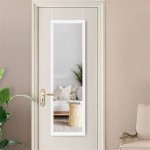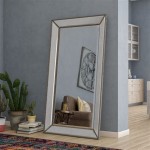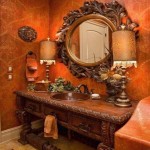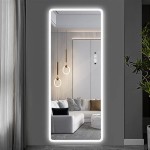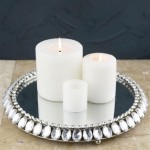How To Put Up A Heavy Mirror On Plasterboard Wall
Hanging a heavy mirror on a plasterboard wall requires careful planning and execution to ensure both the mirror's safety and the wall's integrity. Improper installation can lead to the mirror falling, causing damage and potential injury. This guide outlines the necessary steps to successfully mount a heavy mirror.
1. Assessing the Wall and Mirror
Before beginning, assess both the mirror and the wall. Determine the mirror's exact weight and dimensions. This information is crucial for selecting the appropriate hanging hardware. Inspect the plasterboard wall for any existing damage or weaknesses. Consider the wall's location; avoid placing heavy objects on walls prone to vibrations or impacts.
It's important to locate the wall studs. Studs provide the most secure anchoring points, especially for heavy items. A stud finder can easily locate these wooden supports behind the plasterboard. Mark the stud locations for reference.
If mounting directly to studs isn't feasible due to the mirror's size or placement requirements, consider using specialized plasterboard fixings like heavy-duty hollow-wall anchors or toggle bolts. These fixings provide a secure grip in the hollow space behind the plasterboard.
2. Choosing the Right Hanging Hardware
Selecting appropriate hanging hardware is paramount for safety and stability. The hardware must be rated to support the mirror's weight. Options include heavy-duty D-rings, J-hooks, or mirror clips. Consult the hardware packaging for weight capacity information to ensure it exceeds the mirror's weight.
For mirrors with pre-installed hanging wires, ensure the wire is heavy-duty and securely attached. If the wire appears thin or frayed, replace it with a stronger, weight-appropriate wire. The chosen hanging hardware should also be compatible with the type of fixing being used (studs, anchors, or toggle bolts).
When using D-rings or similar hardware, ensure they are securely attached to the back of the mirror using screws of appropriate length and strength. The screws should penetrate the mirror's frame sufficiently to provide a firm hold. Pilot holes are recommended to prevent the frame from splitting.
3. Installing the Fixings
If mounting directly to studs, use screws long enough to penetrate the stud by at least one inch. Pre-drilling pilot holes will make screwing easier and prevent the wood from splitting. Ensure the screws are suitable for wood and strong enough to support the mirror's weight.
When using hollow-wall anchors, follow the manufacturer's instructions precisely. Typically, this involves drilling a hole of the specified size, inserting the anchor, and then tightening a screw to expand the anchor behind the plasterboard. Ensure the anchors are rated for the required weight.
Toggle bolts are another option for heavy mirrors. These consist of a bolt and a spring-loaded toggle. Drill a hole large enough for the toggle to pass through. Insert the bolt with the toggle attached, then tighten the bolt until the toggle expands behind the plasterboard, providing a secure grip.
The placement of the fixings is crucial. Measure carefully to ensure they are level and evenly spaced. Incorrect placement can cause the mirror to hang crookedly or place undue stress on the fixings.
4. Hanging the Mirror
With the fixings securely in place, carefully lift the mirror and position it onto the hanging hardware. If using D-rings and hooks, ensure the rings are securely seated on the hooks. For wire-hung mirrors, the wire should rest evenly on the supporting hooks or screws.
Once the mirror is hanging, gently tug on it to ensure it's stable. Double-check that the mirror is level and hangs flush against the wall. If adjustments are needed, carefully remove the mirror and adjust the fixings accordingly.
For extremely heavy mirrors, consider using a French cleat system. This system uses two interlocking pieces of wood, one attached to the wall and the other to the mirror. This distributes the weight more evenly and provides a very strong hold.
After hanging the mirror, inspect the wall and fixings for any signs of stress or movement. Regularly check the fixings over time to ensure they remain secure. If any issues are detected, address them promptly to prevent accidents.

How To Hang A Large Or Heavy Mirror

How To Hang A Very Heavy Picture Or Mirror The Best
How To Hang A 100 Pound Mirror On Drywall Quora
:strip_icc()/ScreenShot2022-04-28at1.12.19PM-e055476c70c6438585fa7c5cd531edcf.png?strip=all)
4 Easy Ways To Hang A Heavy Mirror

How To Hang A Heavy Picture On Plasterboard Wall

How To Hang A Heavy Mirror

How To Hang A Heavy Mirror

How To Hang A Mirror On Plasterboard Wall Soraya Interiors

How To Hanging A Mirror Without Stud Heavy

How To Hang A Heavy Mirror On Drywall Stas Picture Hanging Systems

